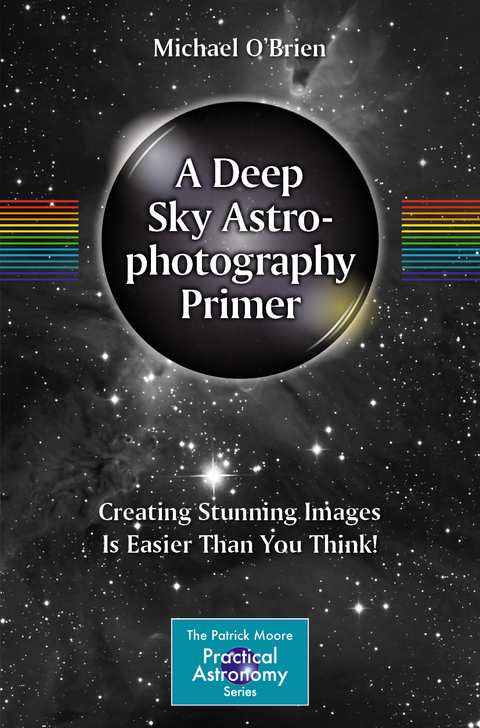
A Deep Sky Astrophotography Primer
Springer International Publishing (Verlag)
978-3-031-15761-5 (ISBN)
This instructional guide has one aim: to teach inexperienced astrophotographers how to take high quality images. Often, basic information about astrophotography is lacking, or is dealt with too briefly in books on the subject. This book is a distillation of the author's own experiences, bringing together everything you will need to make the fastest possible progress in deep-sky imaging.
The book will teach you how to set up and use your astrophotography equipment in a systematic, easy-to-follow manner, helping you get started while avoiding common mistakes. With a step-by-step walk-through course and a unique observational guide to each object, the book contains a plethora of valuable, beginner-friendly information. Particularly useful is the chapter on troubleshooting, which will help newcomers avoid further frustration when things just don't seem to go right! The book also contains a number of easy to advanced DIY projects for imagers working on a budget.
Michael J. O'Brien worked as a Senior Engineer in telecommunications for 20 years before creating his own business repairing and building computers. Following this, he became a partner and designer in a merchandise design company. He currently works as a freelance photographer and amateur astrophotographer of deep-sky objects.
O'Brien took his first astronomical images in 1974 and proceeded putting a video camera on an 18" telescope in the 1980s. He ran an astronomy-based bulletin board called The Astronomers' Den for several years during that time. After a long break from the field to raise a family, he decided several years ago to delve back into the strange and modern world of astrophotography, educating himself on the many advances in equipment and software that had happened in the past 30 years.
In 1995, O'Brien made an 8-inch truss tube Dobsonian telescope. He built many electronic devices including an oscilloscope and a multi card I/O system for a P.C. before they were readily available. More recently, he built dew heater control systems for multiple telescopes, along with EQMOD adapter cables using a lesser known but more stable FTDI chipset, rather than the "Prolific" one currently in widespread use.
Chapter 1. Introduction.- Chapter 2. A Brief overview of deep sky imaging.- Chapter 3. Light pollution and the night sky.- Chapter 4. Astrophotography Equipment.- Chapter 5. Computer Control of a telescope.- Chapter 6. Setting up and using your Telescope.- Chapter 7. Preparation for your First imaging session.- Chapter 8. Computer Controlled Imaging.- Chapter 9. Introduction to Image processing and stacking.- Chapter 10. Troubleshooting.- Chapter 11. Where do you go from here?.- Chapter 12. DIY projects.
| Erscheinungsdatum | 21.04.2023 |
|---|---|
| Reihe/Serie | The Patrick Moore Practical Astronomy Series |
| Zusatzinfo | XXXI, 327 p. 194 illus., 177 illus. in color. |
| Verlagsort | Cham |
| Sprache | englisch |
| Maße | 155 x 235 mm |
| Gewicht | 551 g |
| Themenwelt | Kunst / Musik / Theater ► Fotokunst |
| Sachbuch/Ratgeber ► Natur / Technik ► Weltraum / Astronomie | |
| Naturwissenschaften ► Physik / Astronomie ► Astronomie / Astrophysik | |
| Schlagworte | astro CCD camera • Astroimaging • astronomy DSLR camera • astronomy image processing • astrophotography for beginners • astrophotography tips • Deep-Sky Imaging • goto camera mount • Guide to astrophotography • How to take astrophotography • observational astronomy • smartphone apps for astronomers • telescope equipment |
| ISBN-10 | 3-031-15761-3 / 3031157613 |
| ISBN-13 | 978-3-031-15761-5 / 9783031157615 |
| Zustand | Neuware |
| Haben Sie eine Frage zum Produkt? |
aus dem Bereich


